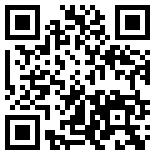牛津大辭典也增加了一些新的詞匯和表達(dá)用語,,經(jīng)過精心的整理,分為上下兩期,,為準(zhǔn)備考雅思的同學(xué)們提供新的材料,,希望對同學(xué)們能有所幫助。
The OED’slexicographershave noticed a rise in the use of specialist medical terms and new acronyms, such asWFHandPPE.The first noted usage ofworking from homewas in 1995, but Paton notes that “the abbreviation was known to very few before it became a way of life for so many of us”. The abbreviationPPE, for personal protective equipment, dates back to 1977 but was “formerly probably restricted to healthcare and emergency professionals”.
注意到,,專業(yè)醫(yī)療術(shù)語和新首字母縮略詞的使用有所上升,,如居家辦公和個人防護(hù)裝備。1995年,,人們首次注意到在家辦公的用法,,但帕頓指出,“在居家辦公成為我們許多人的生活方式之前,,很少有人知道這個縮寫”,。個人防護(hù)用品的縮寫PPE可以追溯到1977年,但“以前可能只有醫(yī)護(hù)和急救專業(yè)人員使用”,。
Social distancing, first used in 1957, “was originally an attitude rather than a physical term, referring to analoofnessor a deliberate attempt to distance oneself from others socially. Now we all understand it as keeping a physical distance between ourselves and others to avoid infection,” wrote Paton.
社交隔離一詞于1957年首次被使用,。帕頓寫道,“(這個詞)早指的是一種態(tài)度,,而非一種行為,,其意思是出于冷漠或者特定目的而使自己與社會保持距離。如今,,我們都把該詞理解為使我們自己和其他人之間保持身體上的距離,,從而防止感染?!?br/>
Previous pandemics have also given rise to new vocabulary. Usage of“pestilence”, or “a fatal epidemic or disease”, first appears in 1382, not long after the bubonic plague peaked in Europe between 1347 and 1351. The adjective“self-quarantined”was first used in 1878 to describe the actions of the villagers of Eyam in the 17th century, who isolated themselves to prevent the second wave of “Black Death” from spreading to surrounding villages.
此前的大流行病也曾催生過新的詞匯,。“瘟疫”一詞或“一種致命的傳染病或疾病“這種說法首次出現(xiàn)在1382年,,就在1327年至1351年歐洲鼠疫達(dá)到高峰期不久,。形容詞“自我隔離的”于1878年被首次使用,該詞被用于描述17世紀(jì)英國伊姆村民的行為,,他們將自己隔離起來,,來防止第二波“黑死病”蔓延到周圍村莊,。
愛品網(wǎng) IPNO.CN
b2b免費推廣平臺
掃掃有驚喜



